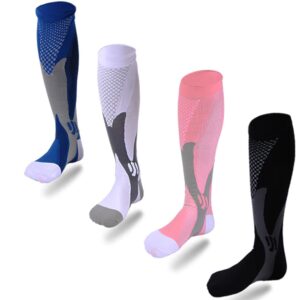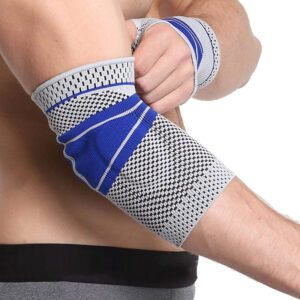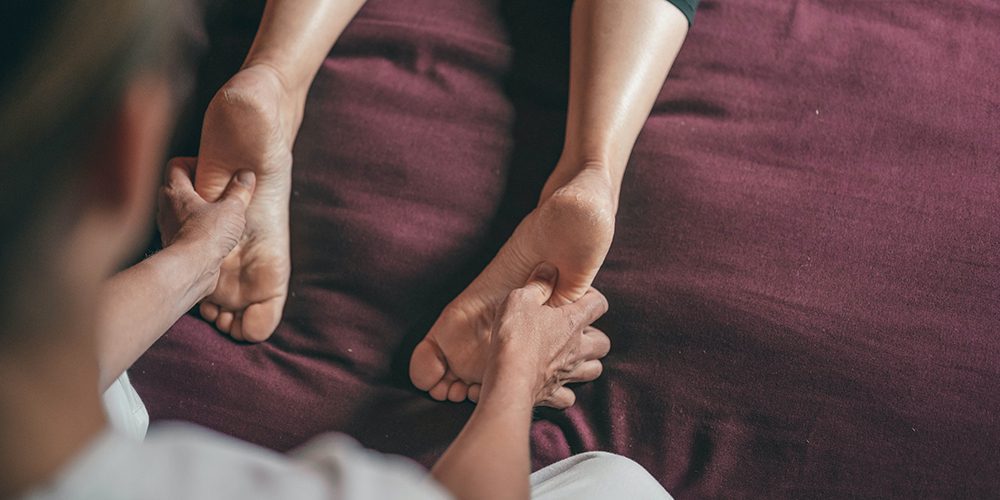Human feet are among the most central and fundamental part of the body. Although often neglected, they play a vital role in our ability to stay active, perform our daily tasks as required, enjoy a pleasant way of life and feel comfortable at all times.
Despite the fact that they are extremely important for our lifestyle and health, our feet don’t always receive the attention and care that they require to stay healthy and function properly. Different parts of the foot can easily get harmed due to poor choice of footwear, an incorrect posture or way of walking, being overweight, and many other reasons.
For instance, one of the most popular conditions that people suffer from when it comes to foot health is bunions. If you haven’t heard of the term before, after reading this article you will understand fully what it means, how the condition is formed, the reasons behind it and the possible treatment. You may find that either you or a friend or family member has bunions, which is absolutely normal. It is a very common condition that affects people of all ages, cultures, and paths of life. In fact, although you can get bunions towards the early stages of your life, research reveals that every one in three people aged over 65 years old has bunions.
So what is a bunion and is it really dangerous?
What are bunions?
If you’re into medical terminology, a bunion is also referred to as a hallux valgus – Latin for big toe and turned away. It is the bump that forms on the side of the big toe and lasts forever, if not treated. Although this description may not really signalize for any danger or threat, bunions are more than they seem at a first glance.
Once the bump is formed, it starts to cause trouble for the rest of the foot and harms the overall structure. It indicates transformations in the bone structure of the front section of the foot. If you suffer from bunions, chances are that you have seen how they change the appearance of your foot over time. The big toe starts to lean towards the direction of the second toe and fails to keep its original, straight line. By doing this, the big toe is now exerting more pressure on the rest of the toes than they are prepared for.
As a result, the alignment of the bones is broken down and gradually a bump is created on the foot. From this description it is easy to see that the disorder is one that progresses with time, making the condition and the symptoms worse. It may be difficult to spot the disorder towards its early stages as you might confuse the symptoms with a standard discomfort after a long day of wearing uncomfortable shoes. However, you ought to be careful as it is easy to prevent this condition but extremely difficult to get rid of without surgical intervention.
What causes bunions?
It is safe to say that women are more exposed to bunion disorder when compared to men. And there is a good explanation for this. The deformation starts when the foot’s first metatarsal bone shifts towards the outside part of the foot while the big toe points towards the inside, rather than straight. The larger part of the shoes on the marketplace don’t support the consequential protrusion, resulting in additional pressure on the joint. As a result, the joint becomes surrounded by a fluid-filled sac called a bursa, which suffers from inflammation, causing the joint to suffer from pain and stiffness.
But why?
The majority of bunions cases are a result of narrow and stiff footwear. When the feet are squeezed and pressured into tight shoes, the big toe is inevitably forced to press the rest of the toes, finding space either on top or under them. In short, shoes that pressure your toes to the side can easily contribute to the formation of a bunion. However, that doesn’t mean that they’re the root cause.
Foot shape and structure is hereditary and is therefore based on family traits and history. Other properties of a foot such as a low arch, flat foot, or loose joints may all be factors increasing the chance s to get a bunion over time. You may be born with a foot structure that has a higher chance of being affected by bunions but that doesn’t guarantee that you must suffer from the condition.
After all, it all depends on how well you look after your feet and how comfortable you keep them. Wearing high heels often increases the likelihood of developing bunions as the full weight of the body is placed on the frontal part of the feet, pushing the toes forward in the shoes. In addition, if your profession involves a lot of walking or standing up for long periods of time, you are also in the group of people exposed to bunions.
Additionally, women could develop the deformation during pregnancy as a result of additional weight on the body, changes in hormonal levels and loosened ligaments. And that’s not all. If you are suffering from arthritis, it is natural that the joint cartilage is weak and harmed, which could also lead to bunions. So how can you tell if this is something that you are facing?
What are the symptoms related to bunions?
Bunions could be difficult to spot when they first start developing but towards their later phases cannot be missed. You may be confused with normal foot pain after a long day at work but if the discomfort continues for a long period of time, schedule a consultation with a trusted medical expert and check out the condition of your feet to prevent any further damage from arising.
Some of the most common symptoms to be on the lookout for when it comes to bunions include:
- Pain and discomfort in the toe area of the feet
- Redness in the zone surrounding the big toe
- Swelling of the bones around the toes
- Corns or calluses, which result from the rubbing of the toes when pressured
- Inability to move the big toe freely and without pain
- Numbness in the front part of the foot
- A burning sensation and inflammation
Some of the symptoms may not be a sure indicator that you are experiencing difficulty as a result of bunion disorder. However, it is always advisable to see a doctor and ask for advice on how you could limit the pain or feel comfortable once again.
How are bunions treated?
Bunions can be treated both surgically and non-surgically, depending on their level of progression and complexity. If caught on time, you could get rid of them with persistence and dedication or at least stop their progression.
If you are interested in ways to eliminate or reduce the discomfort from bunions without surgical intervention, there are a few methods to consider. The first step is to change your current shoes and select a more appropriate type, specifically designed for people with bunion deformations. For women, heels should be avoided as much as possible as they significantly contribute to the development of a bunion.
You could additionally purchase padding that is designed to ease the pain by being placed over the bunion. If this doesn’t work, try to make changes to your daily routine and avoid too much activity if it involves using the feet. For instance, if your work requires spending hours standing up, speak to your managers and colleagues to see if amendments can be made to relieve your feet of the stress.
There are certain medications that are prescribed for pain related to bunions. It is important to note that although they will ease the pain, medication will not cure the problem and will not stop the progression over time. Ibuprofen – an anti-inflammatory medication is one of the most popular choices of medication. There are also a variety of injection therapies that can be made use of to treat bunions. They are not a very common solution but are an alternative that some patients may benefit from. Their main purpose is to treat the affected bursa that is often related to bunions.
You can also ease the pain by cooling the inflamed zone by placing ice cubes on top. It is okay to repeat this a few times a day. Alternatively, there are a range of orthotic devices that will come in handy. The best way to get these is by visiting a foot and ankle surgeon who could suggest a personalized and tailored one for you specifically.
Bunions are a common problem that can certainly be avoided and controlled as long as you are well informed and prepared. We hope that this article has provided you the information you need to start taking actions that will bring the comfort back in your life.

















2 Responses
Thank you so much for talking about how bunions can be caused by faulty footwear. This might be the reason why my feet have been killing me lately as I’ve been trying on some new running shoes for my exercise. I’ll seek the help of a bunion treatment expert so I can stop this from worsening.
Inflammation has been happening to my feet for a long time, and I feel like there’s something that I need right about now to get it to stop. Professional treatments are likely going to be a lot more effective for this, especially since none of the ointments I’ve tried before have worked. I’ll go and look for a podiatrist service in the area so they can assist me with getting these problems to stop.